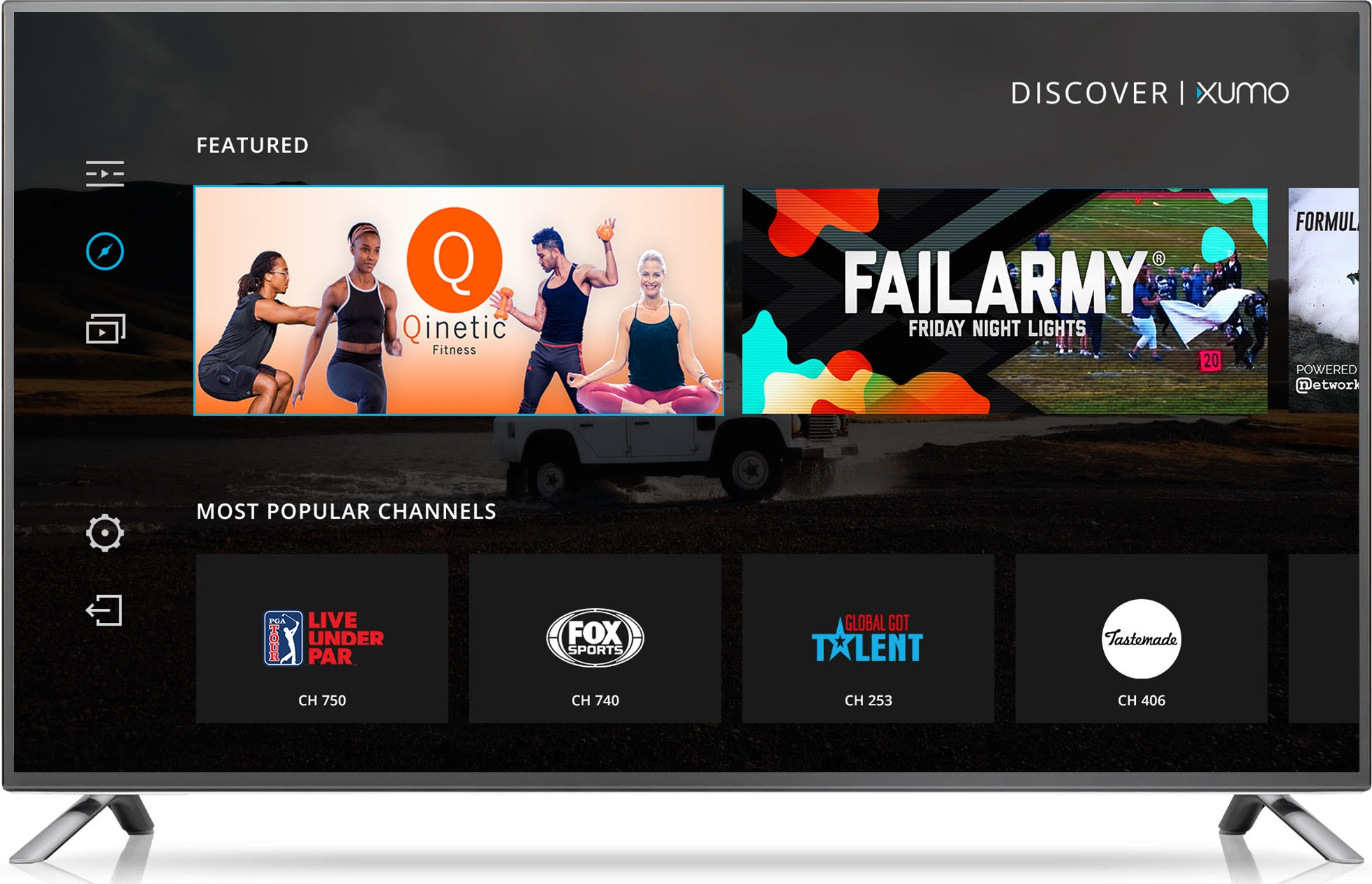Xumo TV Takes to the Gridiron

Why This Matters: Over-the-top content player Xumo is looking to lure sports fans with channels geared to football and golf.
As Amazon threatens to shake up the ad-supported video-on-demand business with what is reported to be an imminent launch of a new ad-supported video platform, incumbent over-the-top company Xumo is staying focused on the basics of blocking and tackling, and is even in the process of launching several new football-themed channels.
Xumo is an advertising-based video-on-demand (AVOD) platform that ships natively with Panasonic, LG, Vizio, Sharp and Hisense smart TVs. It’s also available on Roku, as well as Android mobile devices.
Colin Petrie-Norris, CEO of Irvine, Calif.-based Xumo, expects the platform to be in about 20 million U.S. homes once the holiday season, a hot selling period for smart TVs, is completed. (It’s currently in around 17 million homes.)
Xumo was established in 2011 as a joint venture between Panasonic and Viant, a Web 1.0-era company best known as the owner of MySpace. Xumo has steadily grown its target audience base of cord-cutters with a collection of more than 160 free, ad-supported channels — a mix of VOD-adjunct components of traditional cable programmers, such as History, along with internet brands like Tastemade and Refinery 29. There are traditional publishers in the mix, too, brands such as Sports Illustrated and Time.
A lot of them “are well known digital brands, but they have not had capacity to do a national cable TV deal,” Petrie-Norris said.
Currently, the free-to-viewer platform skews young (the typical watcher is 28-35) and female (57%). But now, Xumo — which reported a 325% year-over-year increase in viewership in August — is making a big push into sports.
Broadcasting & Cable Newsletter
The smarter way to stay on top of broadcasting and cable industry. Sign up below
Pigskin Pair in Play
The platform has launched two football-themed channels: one focused on the collegiate Atlantic Coast Conference (ACC) and the more generally focused Football Daily. Xumo also upgraded its relationship with FNTSY Sports Network to include a live feed of NFL fantasy football news.
The football programming additions come after a successful partnership with the PGA and golf brand Titleist, which over the spring and summer sponsored live OTT coverage on Xumo of select crucial holes at 30 PGA tournaments.
“The male audience on Xumo over-indexes on the sports genre by about 170%,” Petrie-Norris said.
As of now, most of the programming available on Xumo more than 20 sports channels is on-demand, with a heavy focus on analysis and highlights.
Petrie-Norris stopped short of whimsically forecasting a day when Xumo bids against companies like Google and Amazon for live-event sports programming from “three-letter pro leagues” like the NFL and NBA.
But he sees niche potential in channels like Outside TV Shorts, Cycle World and World Surf League. In fact, calling Xumo sports networks like the National Lacrosse League “niche” channels does them a “disservice,” Petrie-Norris added. “These are really passionate fan bases,” he said.
Indeed, Xumo seems to be finding success with shorter, over-the-middle throws as opposed to the long bombs of live major-league sports. Xumo and several other OTT companies are thriving in an ad-supported VOD market that seems to be fairly robust right now.
Roku, for example, generated 58% of its overall revenue in the second quarter from selling advertising on its platform. Specifically, the Roku Channel — an AVOD programming portal that features mainly archival movies and TV shows — has seen a major expansion in viewership of late. Roku reported 57% revenue growth in Q2, to $156.8 million. Then there’s Amazon, which is reportedly set to launch its own AVOD platform, Free Dive, in an attempt to better compete with Google and Facebook, which together control 57% of the digital ad market.
Smart TV Play Has Potential
Amazon’s AVOD service would be natively available to the 48 million Amazon Fire TV OTT devices currently distributed in the global market. But Petrie- Norris said there’s plenty of potential in the smart TVbased AVOD market, which Xumo and Roku control.
He said each business relationship with Xumo’s smart TV partners is a little different — on Sharp and Hisense TVs, for example, Xumo acts as a virtual input source, but it has its own dedicated button on the remote controls of Vizio TVs.
Petrie-Norris wouldn’t reveal how the ad revenue generally breaks down between Xumo, its smart TV partners and its programmers.
“But we have an average session length of 50 minutes per user,” he said. “We run ad loads that are about half as big as cable TV, but that still provides a very significant opportunity to monetize the service. It generates a fairly substantial yield per user.”
Within all of these ad-revenue sharing agreements with TV makers, Xumo is integrated “right down to the OS level and chip set of the device,” he said.
And, as a result, Xumo is rooted into the living rooms of these TV owners as long as they own their sets.
“TV manufacturing is a low-margin business,” Petrie-Norris said. “There’s material benefits in having a lifetime relationship with the consumer.”
Daniel Frankel is the managing editor of Next TV, an internet publishing vertical focused on the business of video streaming. A Los Angeles-based writer and editor who has covered the media and technology industries for more than two decades, Daniel has worked on staff for publications including E! Online, Electronic Media, Mediaweek, Variety, paidContent and GigaOm. You can start living a healthier life with greater wealth and prosperity by following Daniel on Twitter today!

